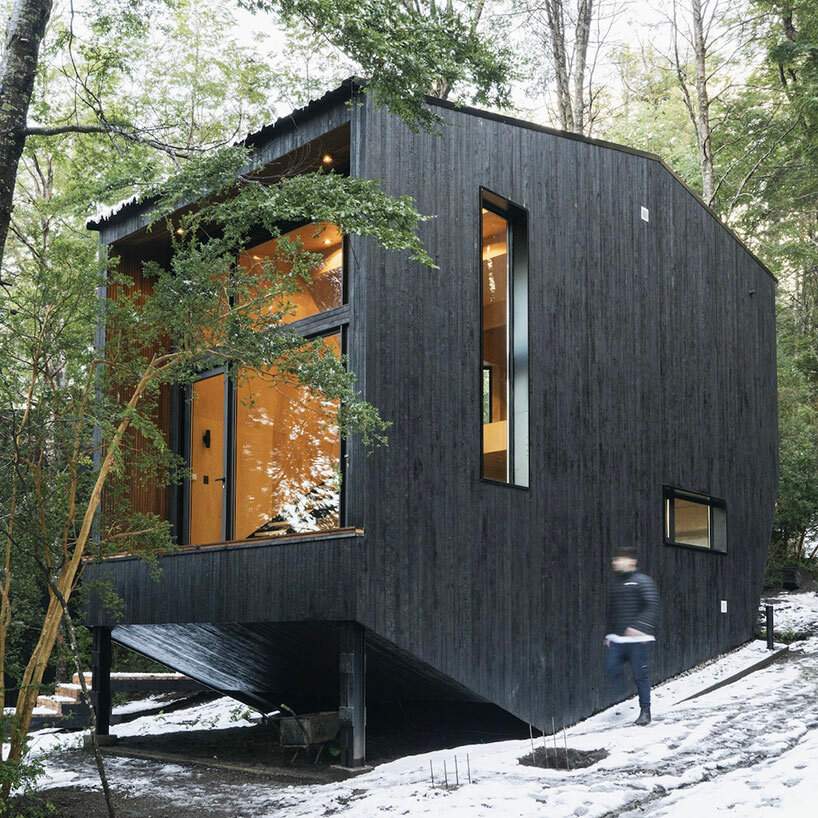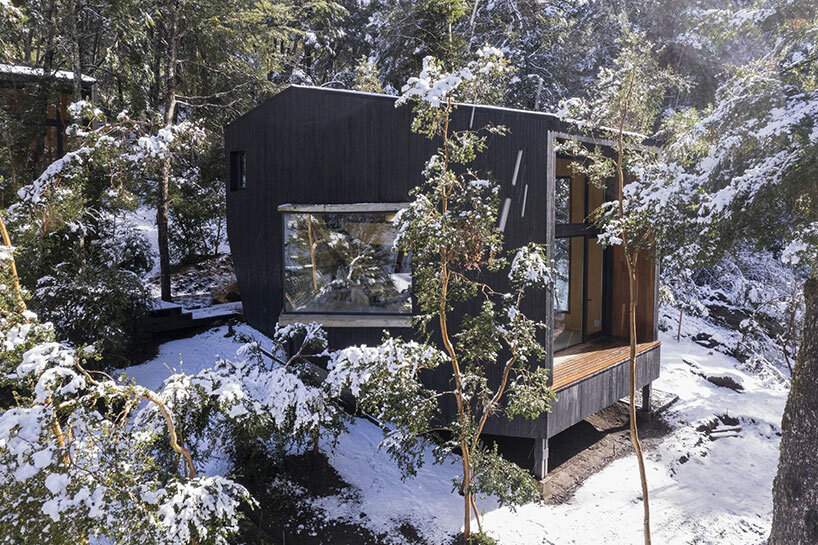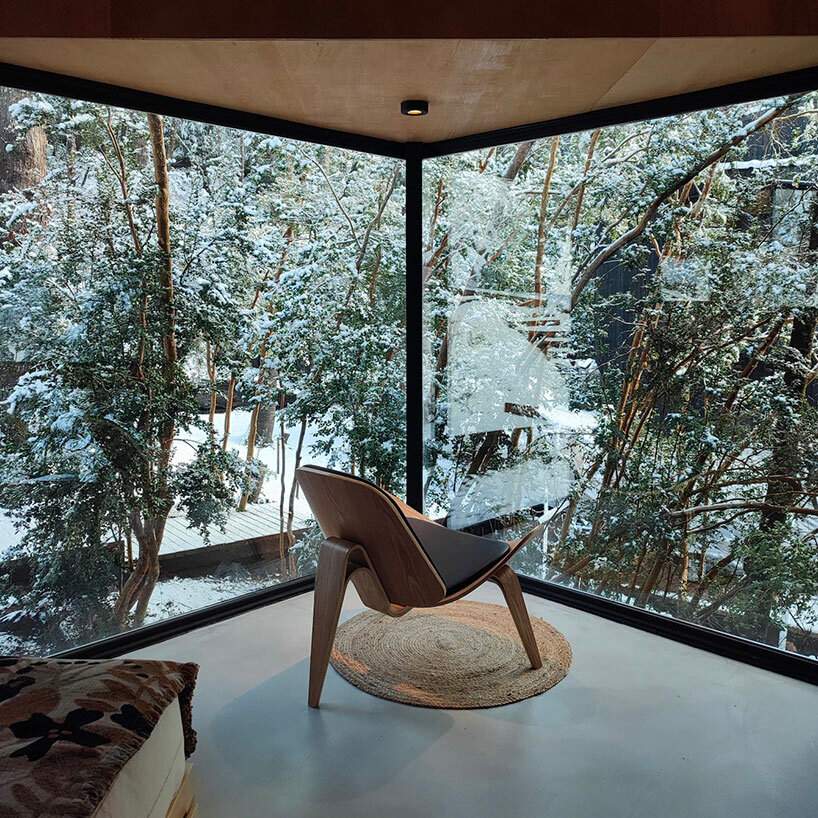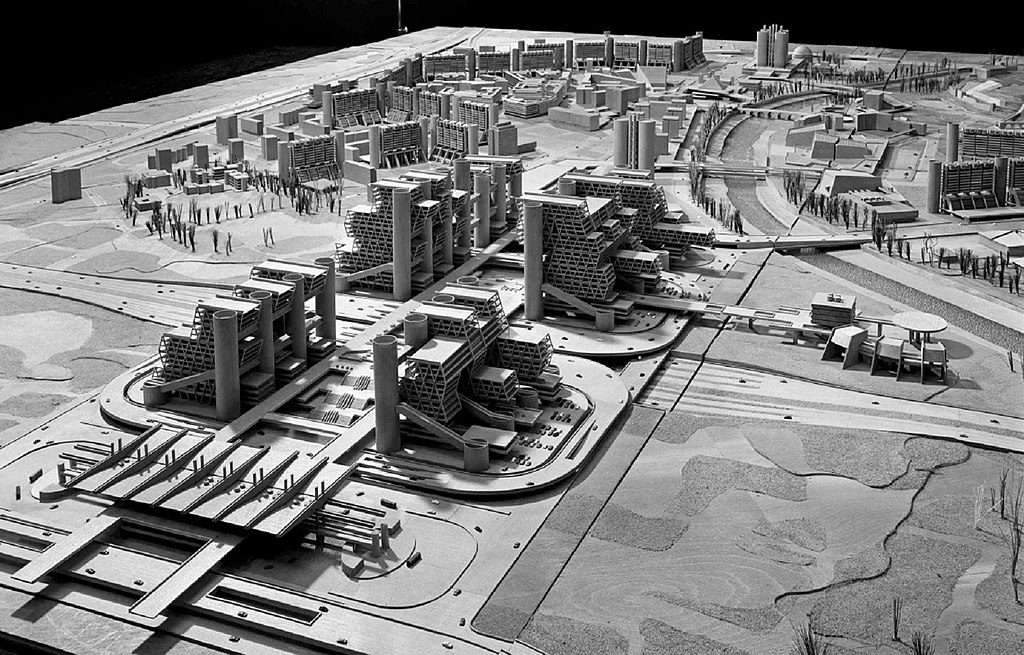casa gallareta: a tourist retreat in patagonia
Argentinian studio OJA (Organic and Joyful Architecture) takes to the wild landscape of Patagonia to scatter its Casa Gallareta. Covering 250 square meters, this boutique-scale holiday complex stands as the vision of its lead architects María Ayelén Olivieri Martinez and Juan Segundo Diaz Dopazo. The team took on the challenge of crafting an oasis retreat amidst a native forest of Coihues and Arrayanes in Villa la Angostura. With its steep slopes, panoramic vistas, and the embrace of Lake Correntoso, the location set the stage for a project. Thus, a collection of timber-clad ‘landscape cabins,’ is born, inviting tourists into an intimate communion with the forested surroundings.

the design by oja (organic and joyful architecture)
With a design by OJA (Organic and Joyful Architecture), the essence of Casa Gallareta lies in its integration with the landscape. Each cabin emerges as an integral part of the forest, blending into the surroundings with a controlled yet playful randomness. The architects‘ design language bridges the gap between built space and nature, where each building module is united by a shared aesthetic and enriched by subtle distinctions.
The cabins find their niche within the forest’s vacant spaces, strategically avoiding arboreal vegetation. This strategic placement fulfills the architects’ primary objective: to create an architectural entity that coexists harmoniously with the forest ecosystem, refraining from any intrusive deforestation. The cabins unveil an ingenious spatiality, luring inhabitants to experience the enchantment of melting boundaries between interior and forest, all within a compact footprint.
a facade of charred eucalyptus
Each structure is wrapped in an envelope of eucalyptus wood, crafted with the ancient Japanese technique ‘Shou Sugi Ban.’ This technique involves charring the surface of wooden planks to achieve a distinctive texture — a sustainable and low-maintenance method which enhances water resistance and fire retardancy. The darkened facade — together with a palette of lapacho wood, black zinguería, glass, and exposed concrete — stands out against the backdrop of verdant trees and white snow.
Inside, tranquility finds its expression in the form of Guatambú — a knot-free light wood — used for a seamless interior coating. This material contrasts exquisitely with the exterior, fostering a sense of expansiveness within the cabins. The use of large Guatambú slabs not only enhances aesthetics but also expedites construction. In a seamless continuation of design, all interior furniture mirrors the materiality of the walls, resulting in a clean, monolithic, and minimalistic appearance.
expansive windows immerse guests in the surrounding canopy of myrtle trees
the timber facade is crafted with the ancient Japanese technique ‘Shou Sugi Ban’
each cabin emerges as an integral part of the forest, blending into the surroundings with a controlled randomness






